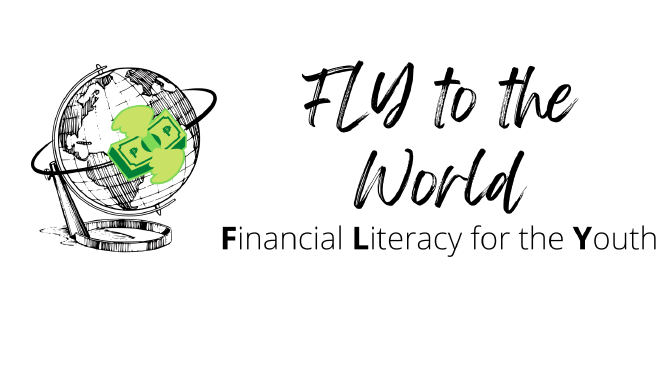Economic Bubbles
By Samarth Singh
Suppose you are in 17th Century Holland – what is the most expensive thing you could buy? Gold? Diamonds? Spices? No, the most expensive thing you could buy was Tulip. This tulip was brought by sea to Holland, and it immediately caught the attention of the upper classes. Soon enough, it became a status symbol for some of the wealthiest people in the region. To put the price of one tulip in context, the value of one tulip bulb was enough to buy a grand house on the Amsterdam Canal.
Unsurprisingly, the tulip market collapsed in February 1637, leaving several people with a lot of debt. Experts refer to this as Tulipmania, and it is probably the earliest evidence of Economic Bubbles. Economic Bubbles occur when the prices of assets (or products) rapidly increase, well beyond their intrinsic value. This rapid surge in price can have a sudden drop, and it is only after that drop that the market realizes there was an economic bubble. That is exactly what happened in Holland in the 17th Century. The prices of tulips increased, and people did not realize that it was a bubble until it burst.
Unfortunately, that wasn’t the only time the world saw an economic bubble. Specifically, there were two more in the first decade of the 2000s. The Dotcom (.com) Bubble in 2002 and The Housing Bubble in 2009.
Before moving on, it is important to know the stages of Economic Bubbles. There are primarily five stages of a bubble:
Displacement
Boom
Euphoria
Profit-taking
Panic
A displacement occurs when investors are impressed with a new development, like a new technology or very low-interest rates. Prices rise slowly at first, but they boom when more and more players enter the market. Then there’s a stage where the product, good, or asset has reached a sky-high price, and its price is way above its intrinsic value. Surely no one would buy it, right? That’s where The Greater Fool Theory comes in. In economics, the greater fool theory argues that prices go up because people can sell overpriced securities to a "greater fool," whether or not they are overvalued. That is, of course, until there are no greater fools left (Investopedia, 2021). Overpriced items can become a status symbol for the rich, and people might buy them just for show, as was the case with Tulips. Some people, however, foresee that the bubble is soon going to burst, and they sell their assets before, sometimes gaining a lot of profit. The next stage is chaos and panic. The price of these assets plummet, and many investors are left with heavy losses.
In the dot-com bubble in 2002, the displacement was the development of the internet and record low-interest rates. In the late 1990s, investors poured a lot of money into internet-based companies. In many cases, investors did not evaluate a company before investing. Investors freely invested in any company which had a “.com” in its name. Companies that didn’t even start collecting revenue launched their IPO and their stock prices skyrocketed. The bubble burst when no more money was getting poured into the market. Investors invested in companies that didn’t have proper business plans. Nevertheless, some companies did survive this crash, such as Amazon and eBay.
The Housing Bubble in the mid-2000s is directly linked to the recession in 2007-2008. The housing bubble gained momentum with an initial increase in housing prices and many investors bought real estate as a good investment. The average sale of houses was up 55% in 2007 when compared to 2000. The interest rates were very less as well. However, in 2006, interest rates gradually started to rise. The cost of houses was very high and so were the interest rates, and this led investors to think that it was a very risky investment. Suddenly, there was less demand for houses, and the market crashed. The bank Lehman Brothers filed for bankruptcy on September 15, 2008. That was the bursting of a bubble and the starting of a financial crisis that will be remembered for years to come.
That brings us to the thought, how can one spot a bubble? While they might seem very obvious afterwards, bubbles are very hard to spot before they burst. A precautionary measure can just be to have a diverse portfolio with investments in several fields, so that a burst remains just a burst and not a problem.
References:
Hayes, Adam. “Greater Fool Theory: What It Means in Investing, with Examples.” Investopedia, May 7, 2021. https://www.investopedia.com/terms/g/greaterfooltheory.asp.
Segal, Troy. “5 Stages of A Bubble.” Investopedia, August 2, 2023. https://www.investopedia.com/articles/stocks/10/5-steps-of-a-bubble.asp.
Edology. “Tulipmania: The First Economic Bubble | Edology,” n.d. https://www.edology.com/blog/accounting-finance/tulipmania-economic-bubble/#:~:text='Tulipmania'%20as%20it%20is%20known,rarest%20bulbs%20as%20status%20symbols.
Hayes, Adam. “Dotcom Bubble Definition.” Investopedia, June 13, 2023. https://www.investopedia.com/terms/d/dotcom-bubble.asp. Team, Investopedia.
“What Is the Housing Bubble? Definition, Causes, and Recent Example.” Investopedia, December 25, 2020. https://www.investopedia.com/terms/h/housing_bubble.asp .
